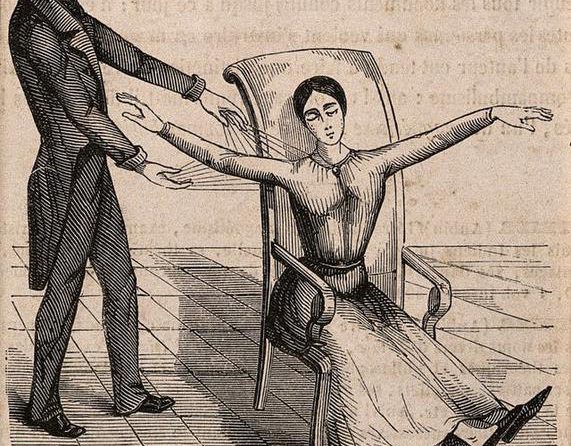Understanding Golf Handicaps: A Path to Enhanced Gameplay
In the ever-evolving world of golf, grasping the concept of a handicap is vital for players aiming to improve their skills and enjoy the game more fully. This article offers an in-depth exploration of golf handicaps, breaking down their essential components and highlighting their role in enhancing gameplay. By analyzing various factors that contribute to handicapping, golfers can gain a clearer picture of their abilities, enabling them to make smarter choices regarding course selection and shot strategies.
The Foundation of Golf Handicaps
Determining one’s golf handicap is crucial for unlocking superior gameplay. By examining each element that contributes to this figure, golfers can better understand their current skill level along with areas where they excel or need improvement. This foundational knowledge aids in strategic decision-making when it comes to selecting courses that align with individual capabilities.
To accurately calculate a handicap, players must take into account several key elements such as average scores from previous rounds, course difficulty ratings, and any adjustments due to external conditions like weather. The comprehensive nature of this system ensures fair competition among golfers with varying skill levels.
Unpacking the Elements of Handicap
The calculation of golf handicaps involves assessing performance over multiple rounds played on different courses. Each round generates a score differential—this reflects how much a golfer’s score deviates from the course rating—and these differentials are averaged out before being adjusted by slope ratings.
Assessing Skill Level
A golfer’s handicap index serves as a standardized metric for evaluating playing ability. Lower indices signify higher skill levels and allow players not only to track personal progress but also facilitate equitable matchups during competitions by pairing individuals with similar abilities.
Evaluating Course Difficulty
The interplay between handicap indexes and course ratings is essential for understanding how challenging a particular venue may be. Course ratings indicate what score an expert golfer (with no handicap) would typically achieve on that layout while slope ratings assess how difficult it is for less skilled players compared to experts.
Strategizing Course Selection and Gameplay Based on Handicap Analysis
With insights gained from analyzing one’s handicap, golfers can make informed decisions about which courses will provide both enjoyment and challenge appropriate for their skill level. For example:
- Low Handicap (0-5): Tend towards longer courses exceeding 7,000 yards featuring narrow fairways.
- Mid Handicap (6-10): Select venues ranging from 6,500-7,000 yards with moderate slopes.
- High Handicap (11+): Pursue shorter layouts under 6,500 yards offering wider fairways for easier navigation.
This tailored approach not only enhances enjoyment but also allows golfers to focus on specific aspects during play based on strengths identified through analysis—such as prioritizing accuracy over distance if long drives are challenging or honing putting skills if they’re already proficient at driving off the tee.
Using Handicap Insights for Performance Improvement
A thorough understanding of your golf handicap acts as a guide toward refining your overall game strategy:
– Identifying Strengths:
- Your established handicap reveals areas where you shine—be it putting or driving—which you should capitalize upon during practice sessions!
– Analyzing Weaknesses:
- Your scores may highlight inconsistencies or challenges faced; recognizing these allows targeted practice aimed at overcoming specific hurdles!
– Optimized Practice Sessions:
- Keen awareness derived from your current standing enables focused drills tailored toward improving weaker aspects while reinforcing strengths!
Mastering Your Handicap: Elevating Enjoyment & Success in Golf
- Select Courses Wisely: Handicaps help identify suitable venues matching player capabilities ensuring balanced challenges leading towards growth opportunities!
- Create Strategic Shot Plans: Knowledge about personal limits empowers informed decisions regarding club selection optimizing scoring potential throughout each round played!
- Cultivate Fulfillment & Satisfaction: Emphasizing progress made through embracing one’s unique journey fosters deeper appreciation within this intricate sport enhancing overall enjoyment experienced along every swing taken!
a solid grasp over golfing handicaps equips players not just technically but mentally too! By leveraging insights gained through careful analysis individuals can elevate both performance levels achieved alongside sheer joy derived whilst engaging passionately within this timeless sport! Embrace knowledge surrounding your own unique journey today unlocking new heights awaiting discovery ahead!
| Differential Range | 90% Allowance | Half Allowance |
|---|---|---|
| 1 – 3 | 3 – 4 | 5 – 6 |
| 4 - 5 | 7 – 8 | < td >9 -10
| Difference | 90% | Half |
|---|---|---|
| 1 | 1 | 1 |
| 10 | 10 | 5 |
| 20 | 18 | 10 |
| 30 | 27 | 15 |
Conclusion: The Path to Enhanced Gameplay
By mastering your golf handicap, you unlock the potential for improved gameplay and a deeper appreciation of the game. Understanding the intricacies of golf handicaps not only enhances your skills but also enriches your overall golfing experience.
You might be interested in …

TGL highlights: Atlanta sweeps New York to win inaugural SoFi Cup
In a historic showdown,the Atlanta Drive Golf Club emerged victorious over the New York Golf Club,sweeping the inaugural SoFi Cup with a commanding 4-0 performance. The final matches, held at the SoFi Center in Palm […]

The tip line can be ruthless sometimes 🔪 #Hysteria #BruceCampbell #Horror #Shorts
In exciting new twists, the tip line unveils its unrelenting essence as tensions soar in the world of hysteria and horror. Brace yourself for chilling updates. #Hysteria #BruceCampbell #Horror #Shorts 🗡️

Tom Watson’s Tailored Golf Instruction for Enhanced Performance and Strategic Course Dominance
Tom Watson’s tailored golf instruction caters to the unique needs of individual golfers, enhancing their performance and strategic course dominance. Watson, a British Open champion, employs in-depth analysis to identify areas for swing improvement. His personalized instruction includes customized drills and strategic advice informed by his extensive experience and expertise. This instruction focuses on refining swing mechanics, fostering precision and consistency in shots, and cultivating a comprehensive understanding of course strategy. Watson’s guidance empowers golfers to overcome challenges, maximize potential, and elevate their performance on the greens




